
Review on ROKR Wooden Educational Engineering Model - Self Assembly for Fun & Learning by Mike Rogers

A fun and useful project for mechanics lovers
I really liked this project; Both the construction and the finished product. But assembling it is a difficult, tricky task. So unless you have a clear preference for such things, you should start with something simpler. The laser cut parts are really well done. And the assembly instructions, with one notable exception discussed below, are the epitome of clarity. There are almost no printed words, but the charts are excellent. Study them very carefully; There are many details that will answer most of your questions if you just look closely. You can't help but be impressed by the design of this kit. Small details like the spoke pattern of each finished gear assembly are unique to ensure final assembly is done in the correct order. Simple wooden tools and jigs really help with spacing and alignment. And subtle things like aligning some wood spacers at 90 degrees to others so the subassemblies only fit together in one possible way. And finally: Glory to Rokr; They actually contain the added detail of all the little details. A lot of forethought went into the development of this kit. While the finished watch is gorgeous in its ornate complexity; Setting up for stable operation is a process. At first I couldn't start it for more than a few seconds before it got stuck. Figuring out what was wrong seemed like an impossible task; I was lost in a sea of interconnected mechanisms with no clear idea of what each of them should do. I've resigned myself to having an attractive, if non-functional, kinetic sculpture. The troubleshooting instructions section is the only area I found to be inferior. This is the only place that relies on written text, and some much-needed clarity has been lost in translation. It's about "stirring the pallet" and using parts from "Number 4-1" to fix the problem depending on the "stopped state". It took me a while to realize that these were "legs" of different heights that needed to be inserted under either the right or left side of the finished clock to allow for the full swing of the pendulum. It would be extremely helpful if this section of the instructions began by explaining that the finished clock is very sensitive to its precise vertical alignment; Even a deviation of a few degrees can make a big difference. Understanding this, along with smearing the gear teeth with the included wax stick and fine-tuning the gear spacing, worked wonders. Initially, even after numerous tweaks, I couldn't get it to work for more than 30 seconds. I think the glide wax must have finally spread over all the teeth because it suddenly started flowing for three minutes at a time. Then five minutes and finally 20 minutes. Now, after a little over a day of interrupted work, it's been running for over three hours as I write this. And it still happens! Tips: - Do not glue parts together when assembling! I was strongly tempted to do this. You MUST do a lot of fine tuning after assembly, and trust me; The finished product is strong enough without glue. Pay special attention to the exact distance between the gears and especially the distance between the shaft sleeves; You still need to make post-build adjustments, but this will get you closer to your goal. I can't stress this enough. It is much easier to wax the splines before final assembly. The instructions only talk about greasing the trowel teeth, but waxing everything really helps a lot. Spend some time using a razor to cut through tiny laser cut areas intentionally left uncut (to keep the teeth). on site during packaging/transport). If you're having trouble separating a piece of wood, stop and look again for that pesky uncut laser cut area. - You still need to sand down some rough edges after separating the parts. Probably OCD on my part, but the brown crayon helped darken the areas that were noticeably lighter after sanding. Instead of using those extra "feet" to align the movement during the tuning process; Start by stacking cardboard or magazines under one side or the other. It takes a lot of trial and error to get the alignment right, and it'll be a lot easier if you wait to get it right before installing these legs.
- New
- Hard to say
New products
Comments (0)
Top products in 🧩 3-D Puzzles
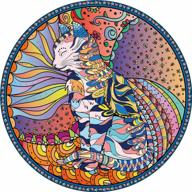
1000 Piece Animal Puzzle Color Challenge Round Mandala Cat Jigsaw Puzzle - Bgraamiens Puzzles Mandala Cat Edition

14 Review

BeginAgain Butterfly A To Z Puzzle - Educational Wooden Alphabet Puzzle - Kids 2 And Up

12 Review

100-Piece Under The Sea Glow-In-The-Dark Puzzle For Kids Age 5+ - Colorful Illustrations Of Underwater Fish, Plants, And Sea Creatures - Award-Winning And Perfect For Learning And Play

12 Review

Colorful Venice 1000 Piece Jigsaw Puzzle By Colorcraft

20 Review
Another interesting products
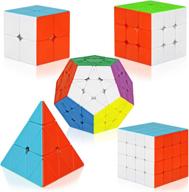
New Speed Cube Set - 5 Pack Magic Cubes Collection For Kids - Pyramid, Megaminx And More!

37 Review
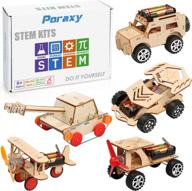
Engage Your Child'S Curiosity With The 5 In 1 STEM Kit - The Perfect Educational Building Toy For 8-12 Year Old Boys And Girls

36 Review
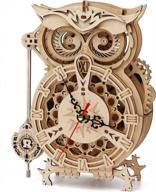
ROBOTIME 3D Wooden Puzzle Mechanical Gear Clock Owl Model Kit For Teens & Adults - DIY Building Set

36 Review
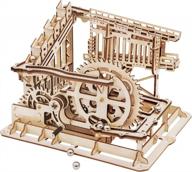
Robotime 3D Wooden Craft Kit: Brain Teaser Games Mechanical Gears Set With Cog Coaster And Steel Balls - Best Building Toys For Kids

47 Review

